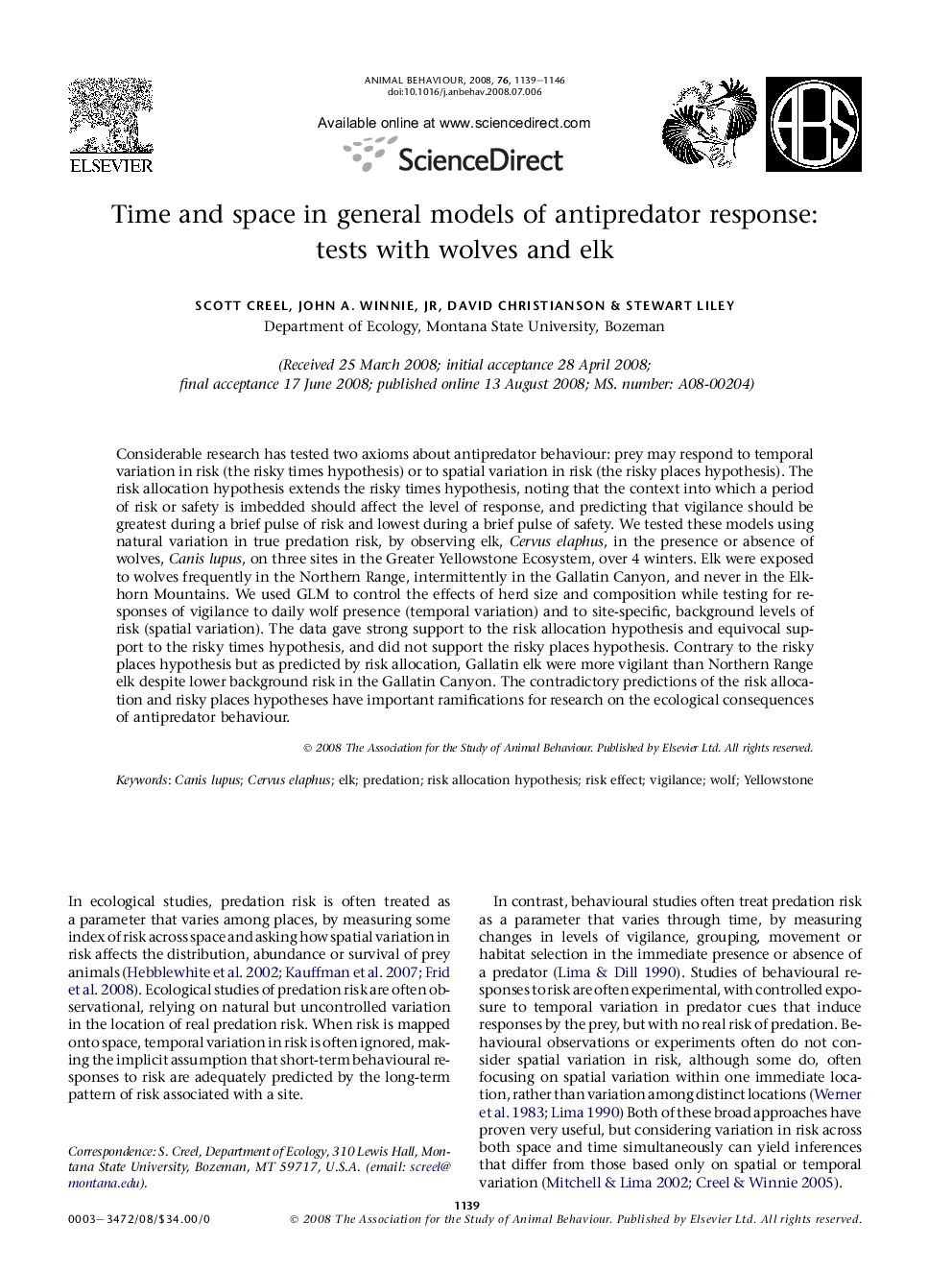| Article ID | Journal | Published Year | Pages | File Type |
|---|---|---|---|---|
| 2418752 | Animal Behaviour | 2008 | 8 Pages |
Considerable research has tested two axioms about antipredator behaviour: prey may respond to temporal variation in risk (the risky times hypothesis) or to spatial variation in risk (the risky places hypothesis). The risk allocation hypothesis extends the risky times hypothesis, noting that the context into which a period of risk or safety is imbedded should affect the level of response, and predicting that vigilance should be greatest during a brief pulse of risk and lowest during a brief pulse of safety. We tested these models using natural variation in true predation risk, by observing elk, Cervus elaphus, in the presence or absence of wolves, Canis lupus, on three sites in the Greater Yellowstone Ecosystem, over 4 winters. Elk were exposed to wolves frequently in the Northern Range, intermittently in the Gallatin Canyon, and never in the Elkhorn Mountains. We used GLM to control the effects of herd size and composition while testing for responses of vigilance to daily wolf presence (temporal variation) and to site-specific, background levels of risk (spatial variation). The data gave strong support to the risk allocation hypothesis and equivocal support to the risky times hypothesis, and did not support the risky places hypothesis. Contrary to the risky places hypothesis but as predicted by risk allocation, Gallatin elk were more vigilant than Northern Range elk despite lower background risk in the Gallatin Canyon. The contradictory predictions of the risk allocation and risky places hypotheses have important ramifications for research on the ecological consequences of antipredator behaviour.
